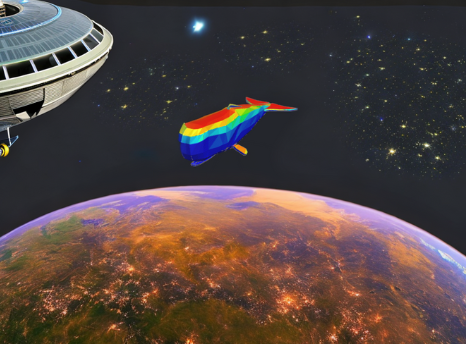Happy Towel day – The life and times of a whale in space.

Happy Towel Day!!
Happy Towel Day everyone! Today is a day to celebrate the importance of towels, as well as the hilariously quirky world of The Hitchhiker’s Guide to the Galaxy. Whether you’re a die-hard fan who knows all the words to the Betelgeuse Death Anthem, or just someone who appreciates a good sci-fi romp, there’s something for everyone in this intergalactic adventure. So grab your towel, hop aboard your own personal spaceship (or just your trusty bicycle), and let’s explore the universe together!
We all know the answer is 42, but the engineers here at Simcenter are still trying to find the ultimate question.
The ultimate question – for a whale at least.
If at a probability of 8,767,128 to 1 against a sperm whale was to appear about Magrathea what would be its undoing? While it races towards, the yet unnamed, ground and ponders the universe in which it finds itself, it is exposed to the harshness of space. So, would its demise be due to the great nothingness or the rather large something it is on due course to meet?
To help answer this we used a little simulation and a lot of guidance from the writings of Geoffrey A. Landis
The small issue of pressure
Since whales dive to great depths, they can both hold their breath for a long time and do this while experiencing large changes in pressure. It is, therefore, reasonable to assume that the lack of pressure would be fine for the whale. Nor would its blood boil since the blood vessels naturally relax and constrict to maintain blood pressure, thus negating the fact that there has been a pressure drop external to the animal. It may experience some problems with vision, but that would benefit it, as it may not notice how quickly it is hurtling toward the planet.
This much was clear, so our engineers considered the temperature of the whale and started some simulations in Simcenter 3D Thermal Multiphysics.

Is Sunlight as forgiving?
Solar flux just outside the Earth’s atmosphere is approximately 1373 Watts per square meter. This is reduced by 15-80% before reaching the earth’s surface due to reflectance, scattering, and absorption of light by the atmosphere. However, the solar flux on the moon’s surface is around 1366 Watts per square meter and at this concentration, it takes a long time to transfer heat in a vacuum.
The simulation images above show how the concentration of flux will be focused on one side of the animal creating a day side and a night side much like that of a planet. This will create a difference in temperature over time that will be taken to the extreme due to the lack of atmosphere. The same is true of our moon which is -183 degrees at its coldest and 106 degrees at its hottest. However, this takes a long time, for example, the Apollo 17 astronauts stayed on the surface of the moon for 74 hours, 59 minutes, and 38 sec and lived to tell the tale.
Modelling the scenario can give us some approximate figures. Using Simcenter 3D Multiphysics, we placed a 45-ton water cylinder in a space-like environment of 4 Kelvin and applied the effects of solar radiation for 90 seconds. We found that for the entire 90-second period of the whale’s descent to the planet (assuming no atmosphere), its surface on the daylight side would only increase by one degree.
So it will instantly freeze?
On the night side of the whale the reverse is happening, the warm whale is radiating energy to the 4 kelvin vacuum of space. A whale of approximately 45 tons is a huge thermal mass, and radiation is an inefficient way of cooling such a large mass. Therefore, 90 seconds is far too short a period to cool the whale in a significant enough time to concern the whale.
It seems the whale is destined to make acquittance with the planet, so let’s check the aerodynamics of the whale to see how much trouble it is in, in this blog.


